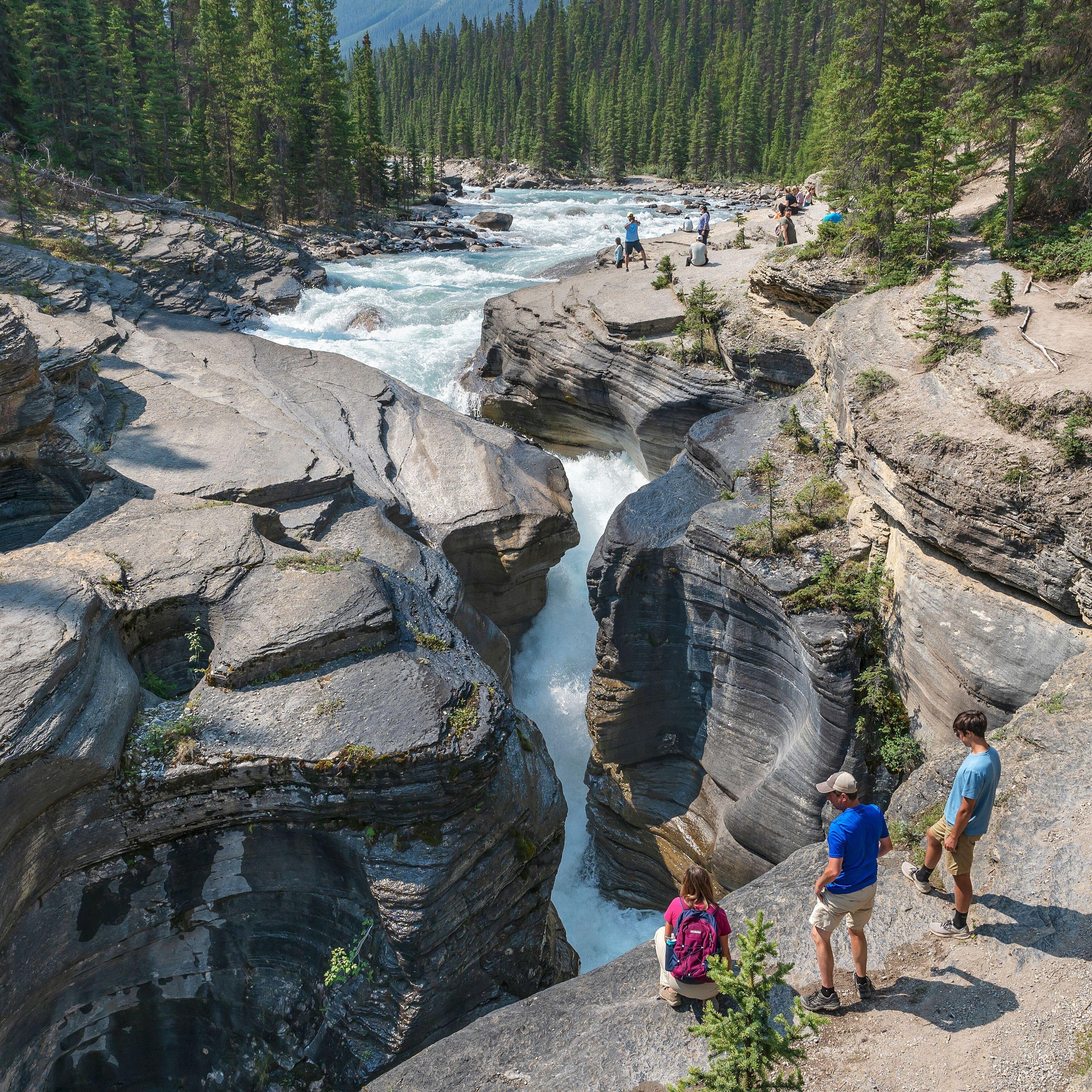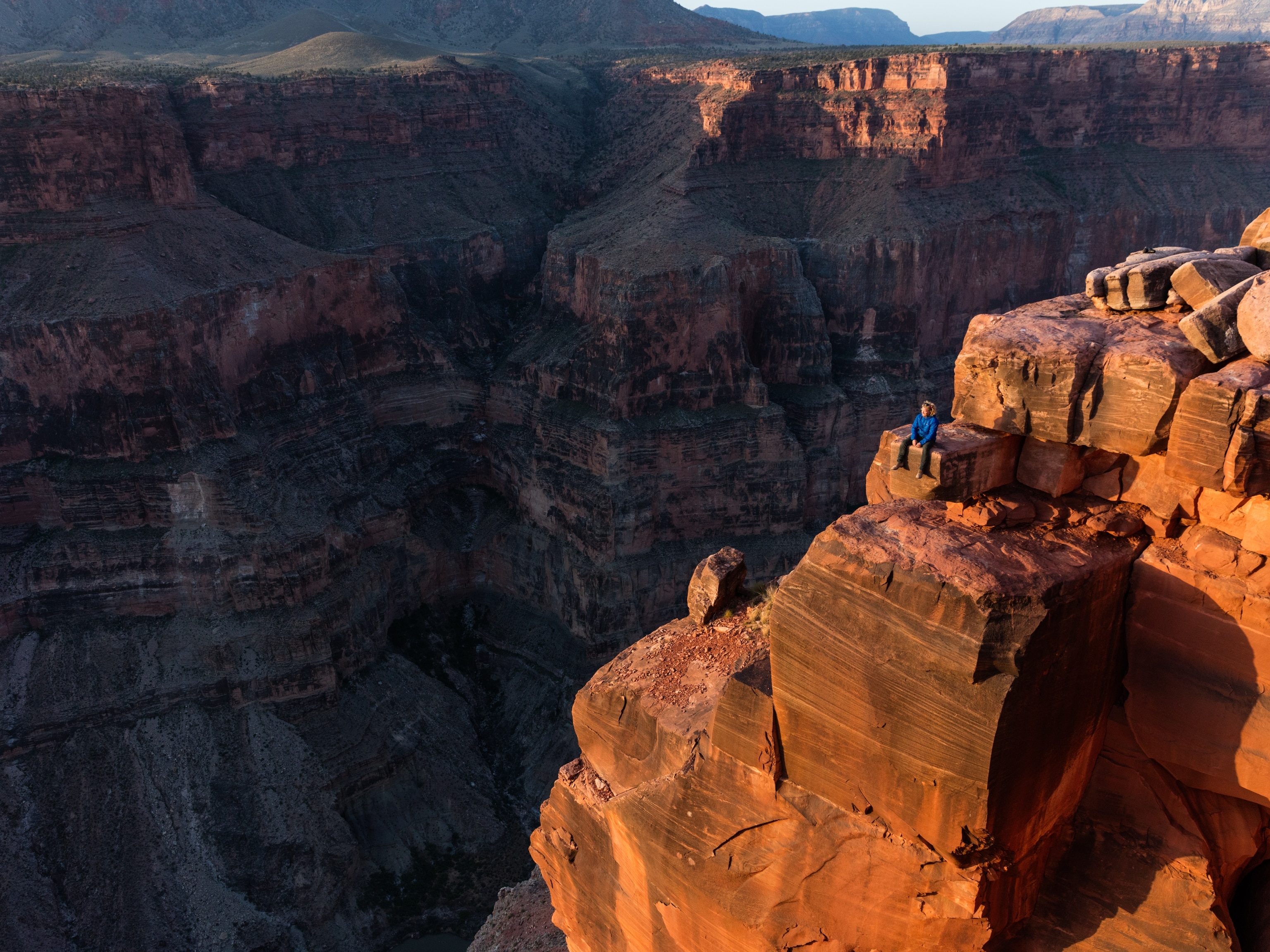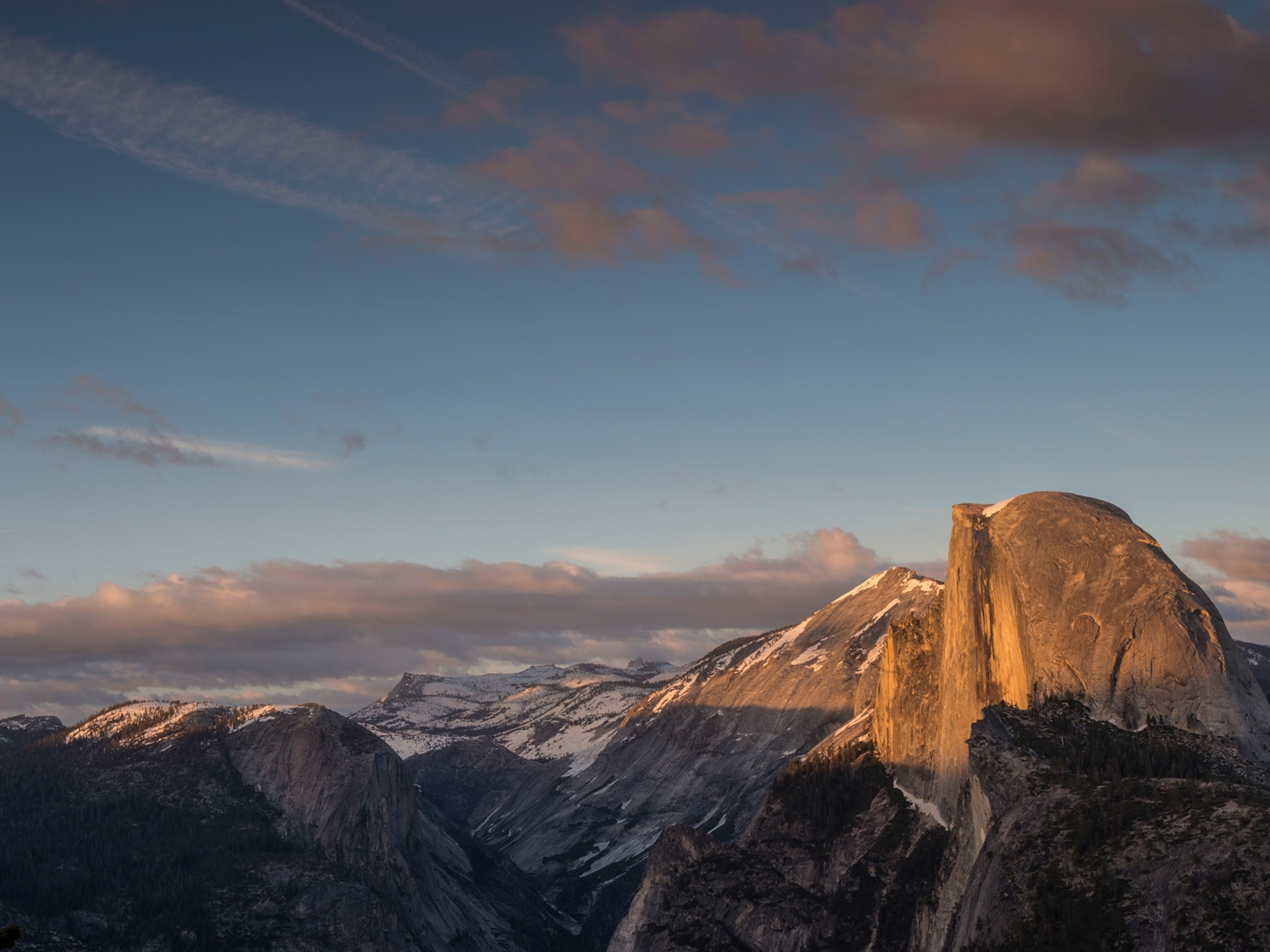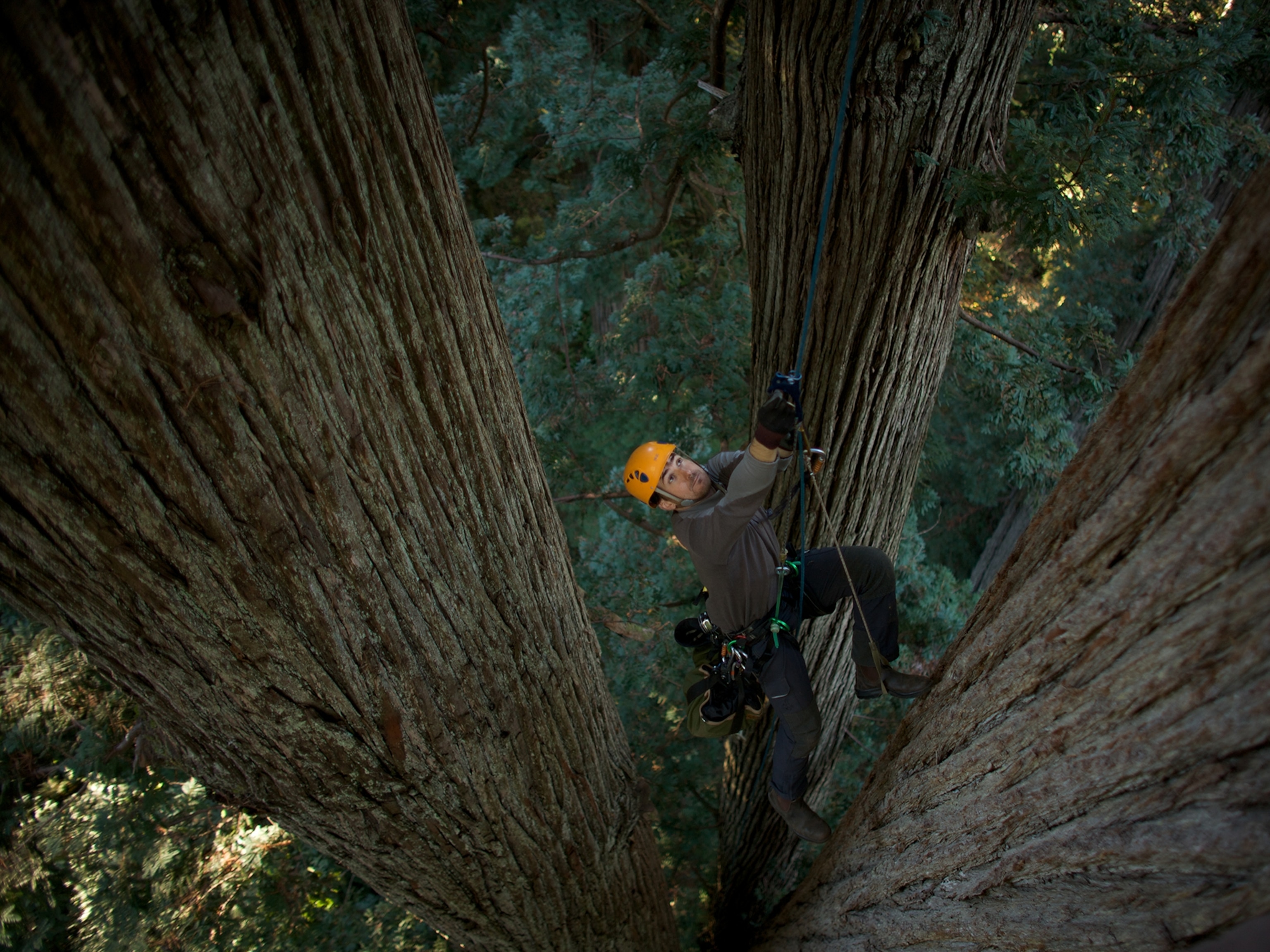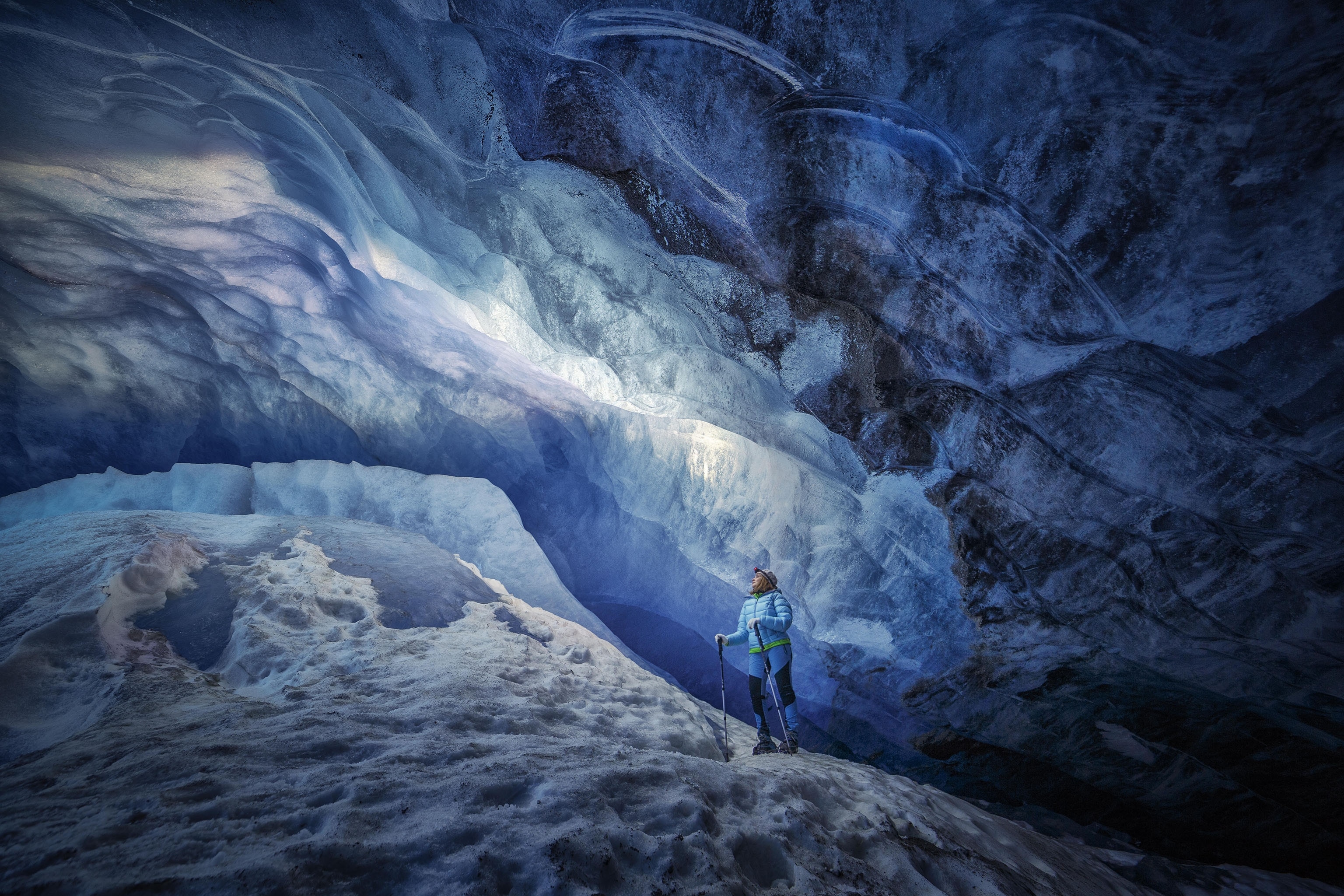
Everything you need to know about Jasper National Park
This Alberta park—the largest in the Canadian Rockies—is wild in every sense of the word. Its residents include grizzly bears, moose, and elk.
Why you should visit Jasper
The largest national park in the Canadian Rockies, Jasper is wild in every sense of the word. Its landscape covers an expansive region of rugged backcountry trails and mountainous terrain juxtaposed against fragile protected ecosystems as well as the world-renowned Columbia Icefield. It’s also chock-full of wildlife, home to some of North America’s healthiest populations of grizzly bears, moose, and elk along with thousands of species of plants and insects.
Established in 1907, the park comprises mountains, valleys, glaciers, forests, alpine meadows, and rivers along the eastern slopes of the Rockies in Alberta Province. Activities range from summer hiking, biking, and paddling to a range of winter sports. It’s also the world’s second-largest dark sky preserve.
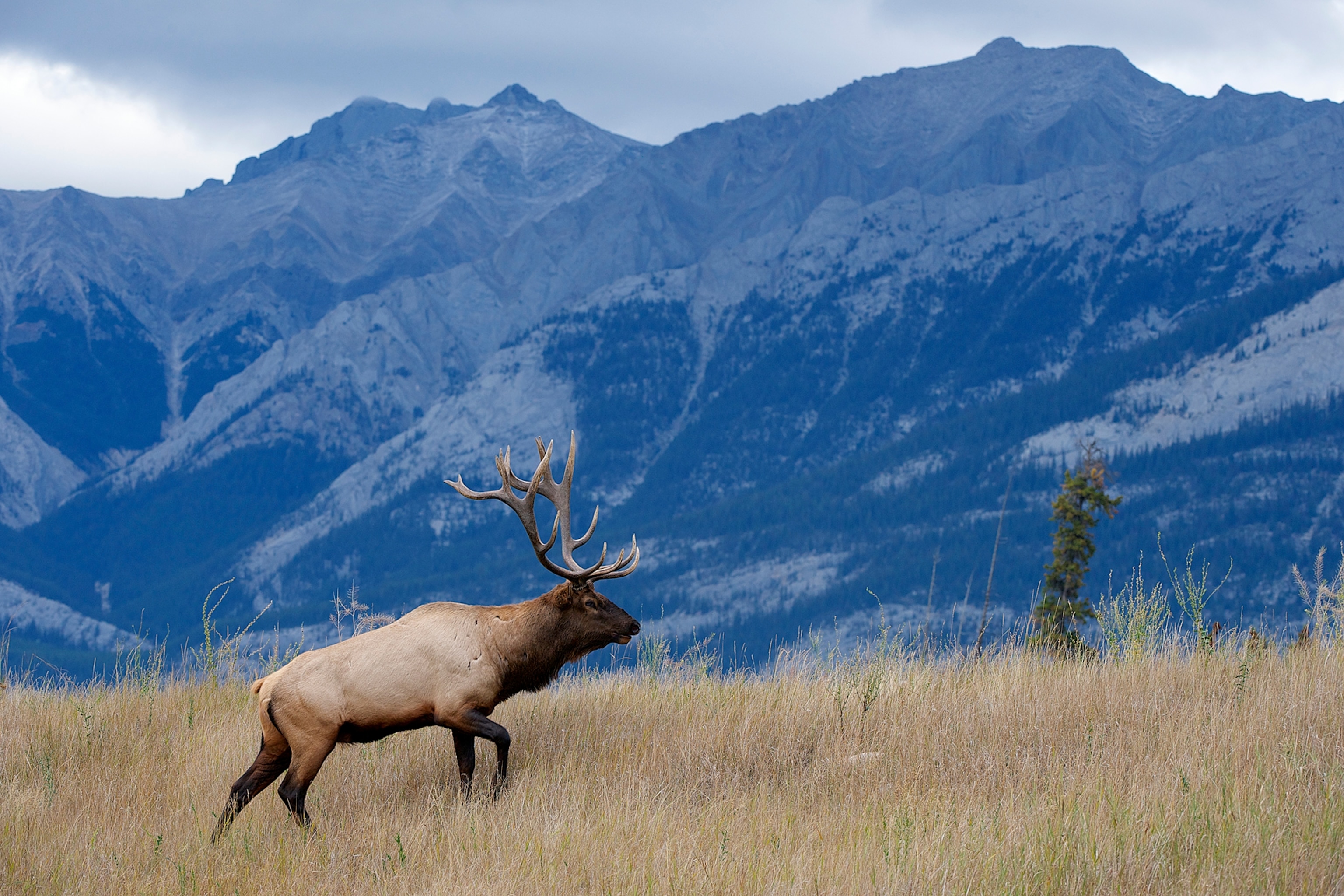
Jasper made world headlines in 2024 when wildfires burned 96,000 acres in the heart of the park, including hotels, restaurants, campgrounds, and other visitor facilities. Highly popular scenic areas like Maligne Canyon and Edith Clavell were devastated, and a large portion of Jasper town was destroyed.
Working around the clock, federal and provincial, nonprofits, and private entities have rushed to make Jasper town habitable again and reopen the beloved park as much as possible. In September 2024, the park reopened to visitors, but many areas remain off-limits.
Constantly updated with the latest information, the park website has a What's Open section with a detailed map covering what places, activities, and services have come back online. Meanwhile, the Canadian government has announced plans to have most park facilities available by the summer of 2025.
“Jasper National Park continues to embody its essence as a place of awe-inspiring beauty, ecological integrity, and cultural significance,” says Philippa Gunn, a communications officer for Jasper National Park.
“While the wildfire has transformed parts of the landscape, it has also reinforced the park’s living, dynamic character. Fire is a natural process here, shaping forests, grasslands, and habitats for iconic species like grizzly bears and elk. Visitors can witness the park’s resilience firsthand through vibrant regeneration, including fireweed blooms, returning wildlife, and the creation of new habitats.”
Jasper fast facts
Location: Alberta
Established: 1907
Size: 2.77 million acres
Annual visitors: 2.48 million (2023)
Visitor centers: Jasper town, Columbia Icefield
Entrance fee: From US $7.83 (C $11) per person
Website: https://parks.canada.ca/pn-np/ab/jasper
Where to find the best views in the park
Rising 3,500 feet above Jasper townsite and the Athabasca Valley, Jasper SkyTram is far and away the best way to snatch a bird’s-eye-view of the vast park. The “flight” on Canada’s longest and highest cable car takes 7.5 minutes. Those seeking an even higher vista can hike a short (0.86-mile) trail to the summit of 8,081-foot-high Whistler Mountain. SkyTram operates from late March to late October.
There’s another vertiginous view from the Columbia Icefield Skywalk, a glass-floored walkway suspended from a cliff 918 feet above the Sunwapta Valley and Icefield Parkway near the park’s southern extreme. From there you can see the eastern edge of the Columbia Icefield. The Skywalk is open from early May to mid-October.
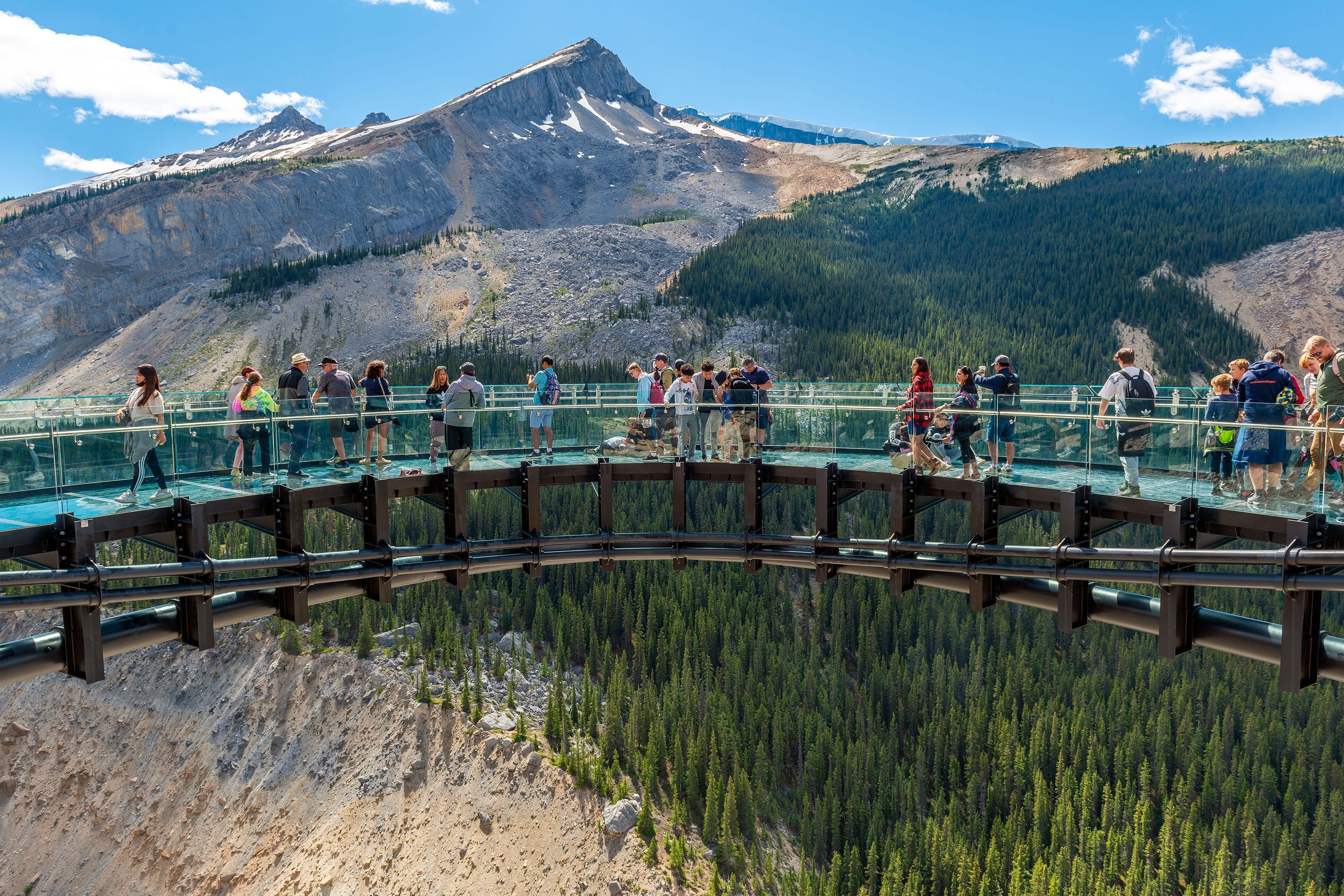
Where to find the park’s best trails
Some of Jasper’s most spectacular day hikes are short and easy. For example, the Athabasca Falls Trail (0.6 miles) to various viewpoints right above a thunderous cascade that tumbles into a slot canyon. Hiking the Toe of the Athabasca Glacier Trail, it’s less than a mile from the parking lot to the outer edge of the frozen giant. Just outside Jasper townsite, the paved Lake Annette Loop (1.7 miles) meanders through waterfront forest with benches and information signs.
Those questing a more challenging day hike can try the Opal Hills Loop (5 miles) from Maligne Lake, the steep Sulphur Skyline Trail (5 miles out and back with an elevation gain of 2,100 feet), or the Saturday Night Lake Loop (15 miles) from Jasper townsite.
The Cavell Meadows Trail that rises past Cavell Glacier is probably the park’s most iconic hike but is closed for the foreseeable future because of wildfire destruction.
Many of Jasper’s backcountry trails were established first by wildlife, then by early travelers including First Nations people, fur traders, explorers, and adventurers. Largely untouched by the 2024 wildfires, these wilderness routes total more than 1,000 miles. Hikers have a choice of more than 80 backcountry campsites, which can be reserved on the park website.
The best spots to see wildlife
Jasper harbors many of the iconic wildlife species that were once commonplace in western North America. The park’s elevation range, geology, geography, and climate create a haven for a variety of animals including 53 mammal species and over 200 types of birds.
Unfortunately, the wildfires of 2024 destroyed many wildlife habitats and will have a long-lasting impact on their behavior and where you are most likely to see them in Jasper.
Wildlife viewing can happen any time of year, but your best bets are early in the morning or late in the evening during the slow seasons (fall and spring), particularly for bears, elk, and sheep. The best time to catch the annual elk rut, when males bugle and compete with each other for females, is August to September along the Athabasca River.
Prior to the fires, Maligne Lake Road was one of the best places to spot grizzly and black bears, as well as deer and elk. The road eventually reaches Maligne Lake, one of the few places in the park where moose like to munch. On the other side of Jasper village, the Pyramid Lake area is another possibility for spotting bears or elk.
Mountain goats and bighorn sheep inhabit the steep, rocky heights above the Athabasca Valley, the Icefield Parkway, and Highway 16 between Jasper town and the Miette entrance gate. The sheep are also known to hang around Miette Hot Springs.
How to visit the park like a National Geographic Explorer
From her base at the University of Alberta, National Geographic Explorer Vivian Giang collaborates and conducts research in partnership with the Alexis Nakota Sioux First Nation on the eastern outskirts of Jasper National Park. “Our research focuses on reclaiming language and stories in connection with environmental stewardship as part of Reconciliation,” she explains.
The Alexis Nakota Sioux were one of the Indigenous peoples forcibly expelled from the Canadian Rockies in the early 20th century so the Canadian government could create Jasper National Park.
“It's amazing that despite the hurt and tragedy of it all, the Indigenous communities are working in partnership with Parks Canada to address what happened before, make sure that history is no longer hidden, and celebrate Indigenous culture, knowledge, and perspectives.”
Although her work takes place outside of Jasper, Giang visits the park with her family.
“Discovering that the people I work with once lived there gave me a new reverence for Jasper. As was able to explain to my children that as Canadians, we are on our journey toward Reconciliation and making things right. This is a land where their ancestors lived, where people used to live and pick berries, hunt, and gather things. My children told me they’ve been learning about some of this in school and that we should remember that we all share this land now.”
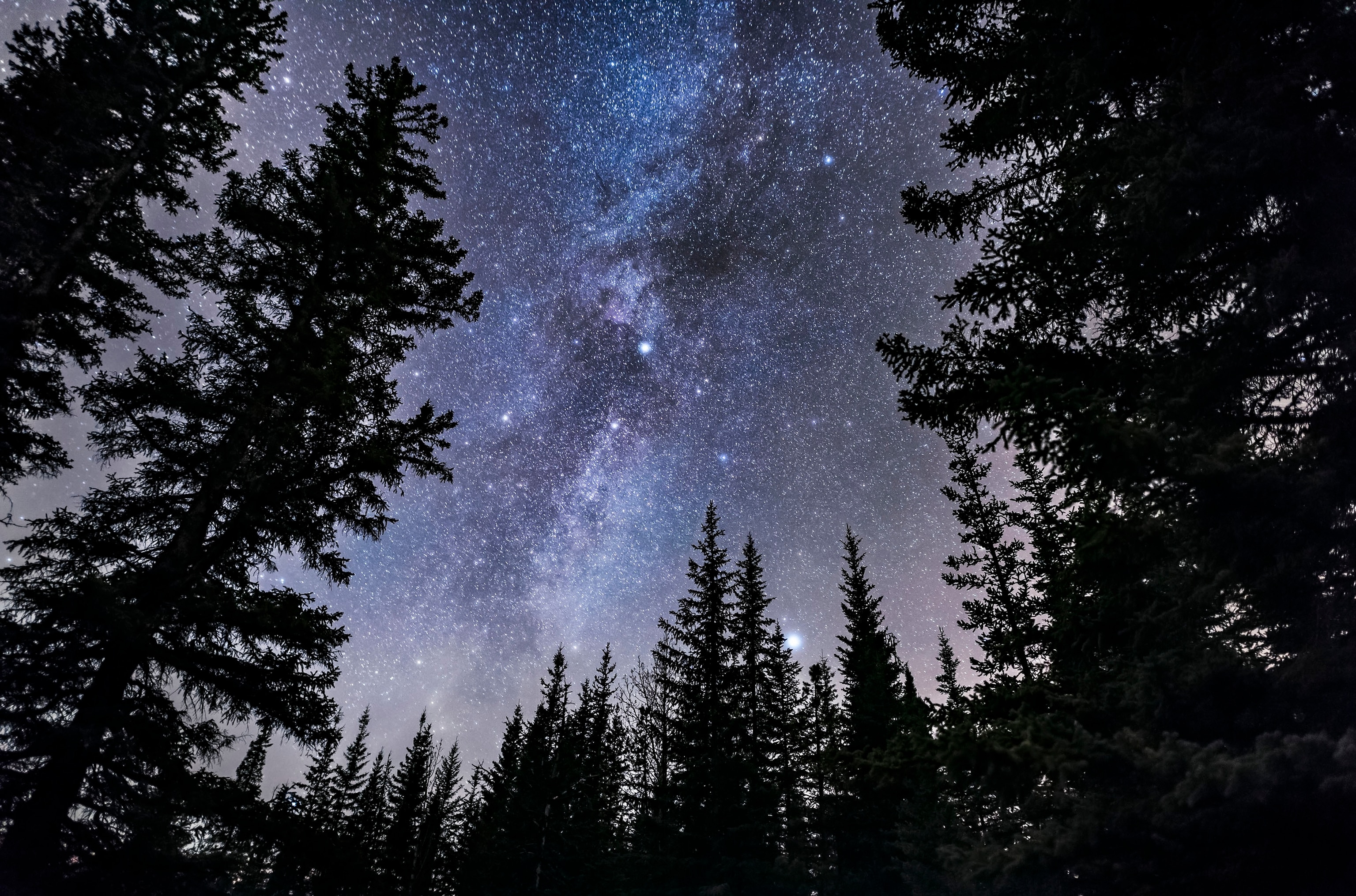
Top experiences in Jasper
“Parks Canada expects the majority of Jasper National Park to be open to visitors for the 2025 summer season,” says Philippa Gunn. “Visitors will enjoy the full range of Jasper activities, including hiking and biking along extensive trail networks, swimming, and canoeing in turquoise lakes, safely observing wildlife and scenic viewpoints that will offer vistas of the ecological regeneration that follows a wildfire.”
However, she cautions that “Heavily affected areas such as Maligne Canyon and the Valley of the Five Lakes, will require additional time for recovery.”
Driving the Icefield Parkway from Wilcox Pass to Jasper town is a must-do for anyone visiting Jasper. Many of the park’s most photogenic spots flank the highway including Sunwapta Falls, Bubbling Springs, the Goats & Glacier Lookout, and Athabasca Falls.
The Columbia Icefield Discovery Centre offers a visitor information desk, two restaurants, and museum exhibits. To celebrate the United Nations International Year of Glacier Preservation (2025), the center is introducing new glacier-focused interpretive programs.
Meanwhile, the center is also the starting point for guided drives onto Athabasca Glacier in a monster all-terrain vehicle, small group glacier tours in a SHERP vehicle that looks like something astronauts might drive on the Moon, and getting a rush of acrophobia as you warily step onto the transparent Columbia Icefield Skywalk. Facilities and tours are available from early May to mid-October.
Maligne Canyon is closed until further notice because of the wildfires but it’s still possible to hike trails in the gorgeous Maligne Lake area. Paddling and electric boats are allowed on the water, while Maligne Lake Cruise offers scenic boat tours from June through mid-October. The company also offers a 5.5-hour wildlife and waterfall tour in the Maligne area that combines boating and hiking.
Another popular activity is riding the Jasper SkyTram to a restaurant and viewpoints near the summit of Whistler Mountain. Down in town, Jasper Planetarium offers stargazing experiences in the world’s largest accessible dark sky preserve. The hottest natural mineral water in the Canadian Rockies (130˚F) is the lure at Miette Hot Springs, which features hot and cold pools, changing rooms, and lockers.
Once the snow starts to fall in the Canadian Rockies, Marmot Basin opens for downhill skiing and snowboarding. The mountain offers lessons and rentals, as well as seven lifts, two terrain parks, and 91 total runs.
Best things to do for families
Jasper’s theme-park-like attractions are at the top of just about every kid’s bucket list for visiting the park. Among these action-packed activities are the SkyTram, tours of Athabasca Glacier in all-terrain vehicles, walking the see-through Columbia Icefield Skywalk, and Maligne Lake boat tours.
Roller-coaster rafting on the Athabasca or Sunwapta rivers is another fun activity. Among the outfitters offering summertime float trips are Maligne Rafting Adventures and Jasper's Whitewater Rafting Company.
Park trails are a more organic (and less expensive) option. Among the best hikes for younger kids are the short hike to Athabasca Falls and the paved trail around Lake Annette.
Stargazing shows at Jasper Planetarium are a great evening activity. Children are welcome to soak in the outdoor hot and cold pools at Miette Hot Springs, open until 10:30 p.m. during the summer. Ranger-led interpretive programs focus on family-friendly topics like park wildlife and ecology and the region’s Indigenous people, as well as campfire singalong sessions.
Many of the park’s interpretive programs are kid-friendly, including new Indigenous-led programming that highlights cultural perspectives and land stewardship, deepening the connection between visitors and Jasper’s heritage.

Where to stay
With around 30 percent of Jasper town burned, accommodation was one of the biggest victims of the 2024 wildfires. Several hotels, two backpacker hostels, and two campgrounds were destroyed while others received various degrees of damage.
Among the hotels currently open are the historic Fairmont Jasper Park Lodge (opened in 1922) and Athabasca Hotel (opened in 1921). Dozens of other overnight options—lodges, hotels, inns, and cabin resorts—are also open, most of them in Jasper townsite.
Camping is expected to make almost a complete recovery by the summer of 2025. Whistlers, Wapiti, and Miette campgrounds, most of the park’s self-registration (first come, first serve) campgrounds, and all backcountry campgrounds will be open for the summer season. Wabasso Campground is closed until further notice.
Here’s what else you need to know
Fees:
Admission to the Jasper National Park is:
$11 (U.S. $7.83)for adults
$9.50 (U.S. $6.76) for seniors
$22 (U.S. $15.66) for families.
Good at all Canadian national parks for an entire year, a Parks Canada Discovery Pass costs:
$75.25 (U.S. $53.57) for adults
$64.50 (U.S. $45.91) for seniors
$151.25 (U.S. $107.68) for families.
Access: Jasper National Park is reachable from Edmonton, Alberta in the east on Highway 16 (Yellowhead Highway), Banff National Park in the south via the Icefield Parkway, and Kamloops or Prince George in British Columbia to the west via Highway 16. Edmonton is the closest international airport. Sundog and Jasper Adventure Centre offer shuttle service between Edmonton and Jasper town. Another option is riding the rails from Vancouver, a 24-hour journey on VIA Rail, or a two-day excursion on the Rocky Mountaineer luxury train.
When to go: The park is open year-round, but the weather and scenery are most spectacular in late summer and early fall. Most campgrounds are open from May or early June until September or early October. Skiing and snowboarding at Marmot Basin typically run from November to April.
Getting Around: Jasper offers a municipal transit service with four lines serving the townsite, lodges, the Pyramid Lake area, and the Wapiti and Whistlers campgrounds.
Are pets allowed?
Dogs are allowed on trails and in the townsite, campgrounds, picnic areas, and many restaurant patios. But they must always be on a leash and under control.
How accessible is Jasper?
Most of the lodging in Jasper is accessible, while Whistlers and Wapiti campgrounds offer accessible campsites and restrooms with roll-in showers.
Designated accessible parking spaces and restrooms are available in Jasper town and along the Icefield Parkway and Highway 16. Both visitor centers are accessible, and the park offers a number of accessible trails including Lake Annette, Pyramid Lake, Maligne Lake, and Sunwapta Falls.
